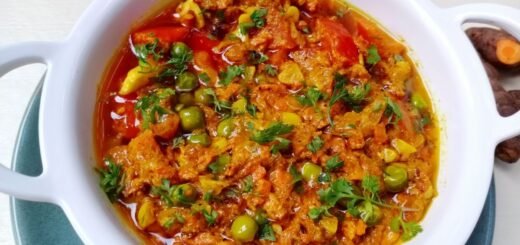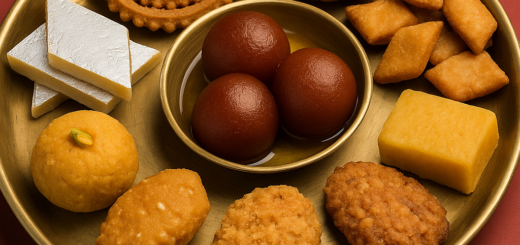Authenticity vs Fusion: Why Indian Food Abroad Loses Its Identity

Indian cuisine carries centuries of history, culture, and tradition. Every region adds its own spices, cooking methods, and rituals to food, making it one of the most diverse culinary legacies in the world. From the royal kitchens of Lucknow to the street food lanes of Mumbai, Indian food never represents just flavor. It represents community, storytelling, and emotion. Yet, when Indian food travels abroad, its essence often changes. Restaurants adjust flavors to suit local palates. Chefs combine Indian spices with Western methods. Dishes gain new names and new identities.
This process leads to a central debate: authenticity vs fusion. While fusion celebrates innovation, it sometimes strips Indian food of its true identity. Abroad, Indian cuisine often faces misrepresentation, simplification, or dilution. The story of why this happens reveals more than just culinary differences. It reflects globalization, migration, marketing strategies, and the politics of taste.
Let’s dive into why Indian food abroad often loses its authenticity and how the battle between authenticity and fusion shapes its global reputation.
Indian Food: A Legacy Too Vast for Simplification
Indian food represents far more than curry and naan. The diversity within India itself challenges easy categorization. Tamil Nadu boasts idlis and dosas, while Punjab celebrates butter chicken and sarson da saag. Bengal thrives on fish curries with mustard oil, while Rajasthan showcases dal baati churma. India never runs out of regional specialties, each tied to geography, history, and climate.
When Indian food travels abroad, this diversity rarely makes the journey intact. Instead, restaurants abroad often pick a few dishes and create a simplified “menu of India.” Butter chicken, chicken tikka masala, palak paneer, naan, and biryani dominate. This small set of dishes represents only a fragment of Indian food, but it becomes the identity of India in foreign lands.
This simplification erases the vast culinary heritage. People abroad start believing India only serves curries rich with cream and butter. The truth—that Indian food spans subtle flavors, countless vegetarian dishes, and healthy traditions—gets lost. Authenticity dies not because Indian chefs lack creativity but because markets abroad often demand familiarity over diversity.
Migration and the Birth of Indian Restaurants Abroad
To understand why Indian food abroad loses authenticity, we must look at migration. Indians began moving to the UK, the US, Canada, and Africa centuries ago. Wherever they went, they carried their spices and traditions. Yet, opening restaurants meant serving locals as well as fellow Indians.
In the UK, for instance, Indian food rose to fame in the mid-20th century. Many restaurants, however, were run by Bangladeshi migrants who adapted North Indian recipes. They used cream, tomatoes, and milder spices because British customers found authentic Indian heat overwhelming. Chicken tikka masala, often called Britain’s national dish, never came from India at all. British chefs created it to suit local taste.
This pattern repeated in America and Europe. Indian immigrants wanted comfort food, but restaurant owners also needed local customers to survive. So they adjusted spice levels, added sugar or cream, and changed presentation. Authentic dishes became lighter, sweeter, and less complex. Fusion began not as creativity but as survival.
The Western Palate and Its Impact
One major reason Indian food abroad loses its authenticity lies in the Western palate. Authentic Indian food often carries bold spices, strong aromas, and layered complexity. Many Western diners, especially decades ago, found this intimidating.
Chefs abroad reduced chili levels, skipped mustard oil, or replaced ghee with butter. They used shortcuts like pre-made curry sauces instead of slow-cooked gravies. Over time, these adjustments became the norm. Restaurants marketed them as “authentic Indian food,” even though Indians back home barely recognized them.
For example, chicken tikka in India means marinated chicken grilled in a tandoor, usually served dry. Abroad, it transforms into chicken tikka masala, drenched in tomato-cream sauce. Similarly, naan in India appears as a fresh tandoor bread, but abroad it comes thick, chewy, and often stuffed with cheese or garlic to appeal to Western diners.
The Western palate demanded comfort, not challenge. This demand diluted authenticity and encouraged fusion.
Fusion: Creative Freedom or Culinary Compromise?
Fusion food always sparks debate. Some argue it celebrates global creativity. Others claim it erases cultural roots. In the case of Indian food abroad, fusion often leans toward compromise rather than innovation.
Chefs abroad mix Indian spices with Western dishes—pizza topped with tikka chicken, tacos filled with paneer, or pasta flavored with curry powder. These dishes gain popularity, especially among younger crowds. They introduce Indian flavors to people who might never try traditional food.
But fusion also leads to caricature. Curry powder, a British invention, often replaces the rich complexity of Indian spice blends. Dishes lose regional context. Paneer tikka quesadillas or butter chicken poutines entertain, but they fail to represent India’s soul. Authenticity disappears under layers of melted cheese or barbecue sauce.
Yet, not all fusion feels negative. Some chefs abroad treat Indian food with respect. They experiment without erasing the cultural story. For example, chefs in Michelin-starred restaurants use Indian spices in innovative plating while still respecting original techniques. The issue arises when fusion becomes the only representation, overshadowing authentic traditions.
The Role of Marketing and Branding
Restaurants abroad also shape perceptions through marketing. To attract local customers, many promote Indian food with exotic labels. Menus use words like “mystical flavors,” “royal curries,” or “exotic spices.” These terms simplify Indian cuisine into stereotypes.
Instead of teaching diners about the variety of Indian food, restaurants feed into clichés. They highlight butter chicken as “authentic” and ignore dishes like khichdi, upma, or litti chokha. Marketing focuses on dishes that sound exciting rather than true.
Fusion gains more spotlight because it feels trendy. Indian burritos or curry pizzas make good headlines. Authentic dishes like rasam or poha don’t sound glamorous enough. As a result, branding reinforces fusion and sidelines authenticity.
The Pressure of Globalization
Globalization affects food everywhere. McDonald’s sells McAloo Tikki in India. Domino’s delivers paneer pizzas in Delhi. Similarly, Indian restaurants abroad adapt to global demands.
Chefs face pressure to create dishes that fit Instagram feeds. Presentation becomes as important as flavor. Colorful sauces, cheese pulls, and unique pairings attract attention. Authentic Indian food, which often focuses on comfort and tradition, doesn’t always fit these modern demands.
For example, authentic thalis carry 8–10 small dishes served in steel plates. Abroad, restaurants might reduce them to three or four curries served in fancy bowls. Globalization transforms the way Indian food looks, feels, and sells. In this process, authenticity suffers.
Loss of Ingredients and Substitutions
Another reason Indian food abroad loses identity lies in ingredients. Many spices, vegetables, and cooking oils common in India remain unavailable or expensive abroad.
Chefs substitute them with local ingredients. For instance, they replace mustard oil with olive oil or sunflower oil. They use frozen paneer instead of fresh. They substitute spices with ready-made curry powders. They also skip fresh coconut or tamarind because of availability issues.
These substitutions change not only taste but also texture. Sambar without fresh tamarind never carries the same tang. Rogan josh without Kashmiri chilies loses its iconic red glow. Dal made with canned lentils lacks soul.
While substitutions help Indian food survive abroad, they slowly distance it from its roots.
Perceptions and Misconceptions Abroad
Another challenge lies in how foreigners perceive Indian food. For decades, people abroad associated it with being “too spicy,” “too heavy,” or “too oily.” To counter this perception, restaurants watered down flavors and added cream.
Even today, some diners abroad approach Indian food as “curry with rice.” They fail to recognize the vast vegetarian traditions, the regional subtleties, or the health-focused dishes like millets, lentils, or fermented foods. Misconceptions force restaurants to stick to safe menus. This cycle reinforces stereotypes and weakens authenticity further.
Indian Chefs Abroad: Guardians of Authenticity
Despite these challenges, many Indian chefs abroad fight for authenticity. They refuse to compromise on spices, techniques, or presentation. They explain dishes to customers, educate them about history, and highlight regional diversity.
Chefs like Madhur Jaffrey, Atul Kochhar, and Gaggan Anand built careers by showcasing Indian food with respect. They introduced the world to Indian flavors without reducing them to stereotypes. They proved that authenticity can attract global audiences if marketed with pride and storytelling.
Restaurants run by second- or third-generation Indians often show deeper commitment. They embrace the challenge of balancing authenticity with adaptation. Instead of erasing identity, they present food as cultural heritage.
Authenticity as Resistance
In many ways, cooking authentic Indian food abroad acts as resistance. It resists the narrative that Indian food must adjust to fit Western tastes. It resists dilution and misrepresentation. It celebrates heritage in its original form.
When chefs abroad serve authentic dosas with sambar, or goat curry with bones intact, they invite diners into India’s reality. They create cultural exchange instead of cultural compromise. This authenticity also strengthens identity for the Indian diaspora. Eating true food connects them to their roots, their ancestors, and their memories.
Why Fusion Still Matters
Although authenticity remains vital, fusion does not deserve outright dismissal. Fusion has introduced Indian spices to millions who may have never stepped into a traditional restaurant. Indian-style burgers, wraps, and pizzas built curiosity. They created a bridge.
The problem arises when fusion replaces authenticity completely. Fusion should complement, not dominate. It should highlight versatility, not erase tradition. When chefs fuse with respect, they create new possibilities without losing identity.
The Future of Indian Food Abroad
The future depends on balance. Authentic Indian restaurants must continue to showcase true diversity. They must move beyond butter chicken and present the beauty of idlis, litti chokha, and poha. Chefs must educate customers, not just serve them.
At the same time, fusion must evolve responsibly. It must innovate while giving credit to roots. Instead of caricatures, fusion should act as collaboration. For example, pairing South Indian chutneys with Western breads or using millet in global health menus.
Food festivals, pop-ups, and culinary tourism also play a role. They give authentic food a platform to shine. They allow foreigners to taste dishes beyond stereotypes. They make authenticity desirable and fashionable again.
Conclusion: A Dish of Identity
Indian food abroad stands at a crossroads. On one side lies authenticity, carrying centuries of tradition, diversity, and depth. On the other side lies fusion, offering innovation but risking dilution. When chefs and diners choose fusion without context, Indian food loses identity. But when authenticity leads the way, Indian food gains respect across the globe.
Food always tells a story. The story of Indian food must remain honest. It must celebrate spices, traditions, and diversity. It must resist stereotypes and simplifications. Only then can Indian cuisine abroad carry its true soul.
Also Read – Gym Culture: Why Muscle Became the New Status Symbol













